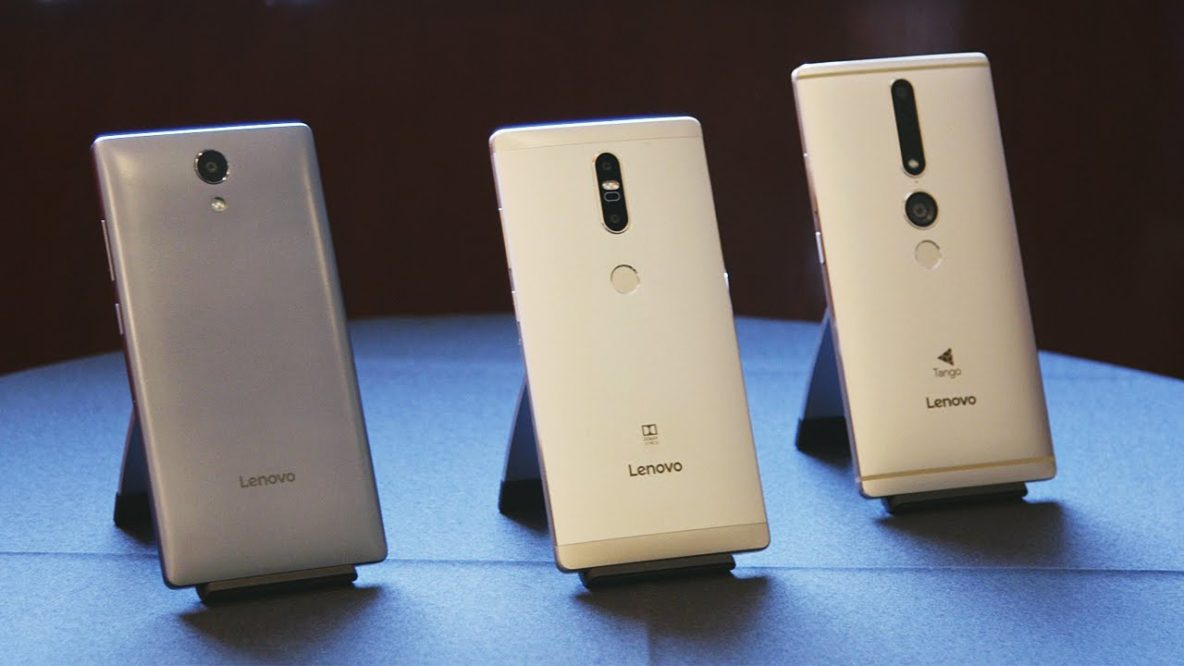Coinciding with the smartphone launch event, Lenovo also revealed real-life and on-screen couple JaDine [James Reid and Nadine Lustre] as the new faces of the label. It’s a move we’ve seen from the manufacturer earlier, when it tapped the Filipino love team for the latest Moto phones. Which is hardly surprising considering it owns Motorola’s handset business.
SEE ALSO: 10 smartphones in PH with batteries above 4,000mAh
The Phab 2 phones are mostly identical, except for their back covers and a few special features. They’re available in gray or gold unibody designs, and their front panels bear 6.4-inch displays of varying quality. All ship with Android Marshmallow onboard.
Lenovo Phab 2, the cheapest of the bunch
The Lenovo Phab 2 is the cheapest of the bunch at P9,999, and for good reason: It has a modest specs sheet, headlined by a quad-core MediaTek MT8735 processor with Mali 720 graphics, 3GB of RAM, and 32GB of expandable storage. The screen is 720p, while the battery is of the 4,050mAh variety. That said, it would be fair to assume the Phab 2 could easily manage two days of use on a charge. The Phab 2 has a 13-megapixel, f/2.0 camera on the back and a 5-megapixel front-facer for vanity shots and video chat. (Click for complete specs.)
Lenovo Phab 2 Plus
The more expensive Lenovo Phab 2 Plus, retailing at P14,999, steps up to a full-resolution display and an octa-core MediaTek MT8783 processor. It also has a fingerprint sensor and dual rear-facing cameras for refocusing shots after the fact and adding bokeh to your image. Another unique selling point is augmented-reality mode, which works similarly to the Phab 2 Pro’s AR feature. Among other things, it allows the little ones to have fun with the phone interacting with virtual kittens and dogs. (Click for its full specs.)
Lenovo Phab 2 Pro
And while baby animals — digital or otherwise — are cute and all, it’s the P24,999 Lenovo Phab 2 Pro we’re most excited about. It’s the first consumer device to be injected with Google’s Tango augmented-reality service, which has been in development since 2014. Granted, that’s not a very long time, but judging from the Tango demos we’ve seen so far, the technology has the potential to change the way we perceive and interact with our environment. There are currently around 30 Tango-enabled tools and games available in the Google Play Store, with more coming in the next weeks and months.
The more interesting applications we’ve across lately are the Measure app (self-explanatory); the Amazon Product Preview app, which lets you plop virtual furniture into existence; and the handful of games like Domino World and Phantogeist that, for the most part, work well on the Phab 2 Pro.
The device itself boasts all sorts of depth- and motion-sensing tech and a Qualcomm Snapdragon 652 processor optimized for AR. Also on deck are a Quad HD screen, 4GB of RAM, 64GB of storage, 16- and 8-megapixel rear and front cameras, and a 4,050mAh battery. The Phab 2 Pro supports fast charging over a standard microUSB port. (Click for complete specs.)
So, which of these three Phab models are you most interested in?
Image via The Verge
Share this Post



